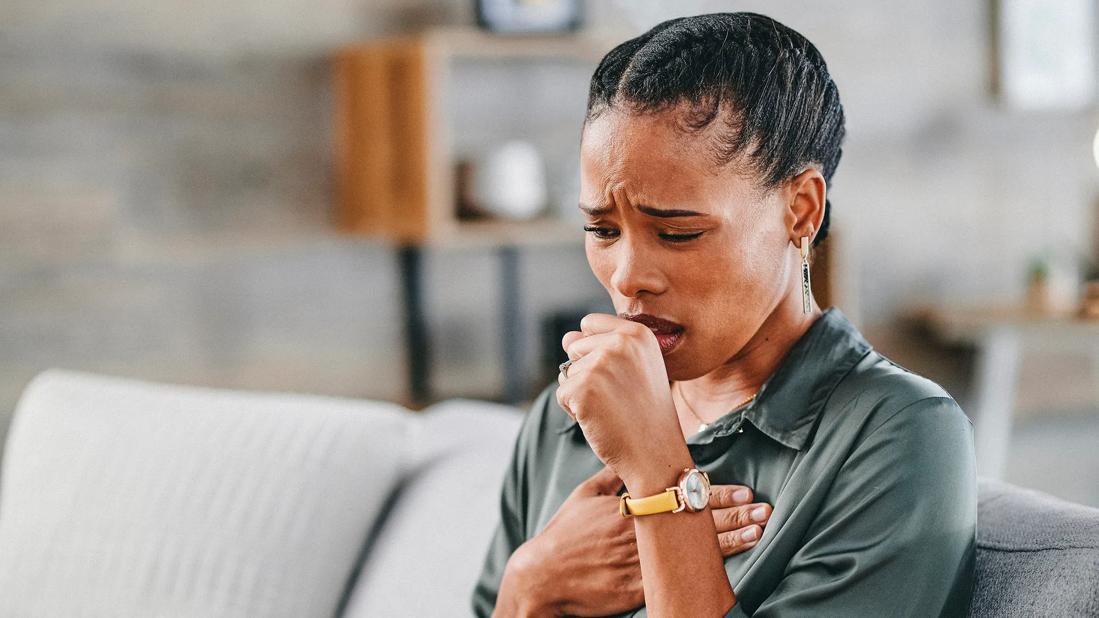Getting vaccinated in October can help protect you against severe illness between November and March

Ah, fall. You’ve got to love it. The air is crisp! Apples are in season! The leaves are changing!
Advertisement
Cleveland Clinic is a non-profit academic medical center. Advertising on our site helps support our mission. We do not endorse non-Cleveland Clinic products or services. Policy
And so is the viral landscape.
That’s right. Respiratory season is upon us. And that means the warm, pumpkin spice treat you’ve been yearning for may well come with a side of sniffles.
Pediatric infectious disease specialist Frank Esper, MD, explains what exactly we mean when we say “respiratory season,” and how to keep your family as healthy as possible.
Respiratory season is the time of year when we can expect to see the most respiratory infections. It typically starts around November, peaks in January or February and ends in late March or early April. Dr. Esper says the infections circulating during this period can be as minor as the common cold or as severe as a bad case of pneumonia.
When you hear the word “respiratory,” you probably think of lungs and breathing, but there are lots of other conditions that fall under the “respiratory illness” umbrella, including ear infections and sinusitis.
“Those kinds of infections stem, typically, from a cold or flu germ,” he clarifies.
To be clear: You can contract respiratory illnesses at any time of year. But they’re more prevalent during this time. That increases your — and everyone else’s — chances of getting sick.
“The COVID-19 pandemic showed how bad respiratory infections can be,” he adds. “It also showed us that when everybody gets a respiratory infection at the same time, it can overwhelm the healthcare system.”
Advertisement
Right about now, you may be staring at your calendar, wondering why germs always seem to get busy at the same time you do. Human behavior is part of the answer, but there’s more to it than that.
“These viruses do a coordinated dance,” Dr. Esper explains. “We can usually anticipate when a certain virus is going to peak. There are certain viruses that like only certain parts of the season.”
Croup, for example, happens at the beginning of respiratory season. It usually gives way to respiratory syncytial virus (RSV). RSV is followed by influenza, parainfluenza … and on and on we go.
Researchers only partially understand why this intricate choreography unfolds the way it does. Here are a few of the contributing factors we’re aware of:
During respiratory season, we’re all at risk of contracting a nasty bug. And no matter how healthy we are, there’s a chance we could get extremely sick.
But some people are more likely to experience severe illness and complications. Dr. Esper says that, while each virus is a little different, your risk generally goes up if you:
Advertisement
Nobody’s a fan of respiratory season. And it can be distressing to know that you or somebody you care about may be at risk of experiencing complications.
But there’s good news: There are common sense precautions you can take to improve your chances of having a sniffle-free season.
The best thing you can do to protect yourself against respiratory infections is simple: Wash your hands. Do it:
You probably do most of these things already. But Dr. Esper also recommends cleaning up as soon as you come home from work or school.
“If there isn’t a sink near the entrance of your house, have an alcohol dispenser by the door,” he recommends. “It’s one of the best things you can do to prevent the infections from coming home with you.”
If you have children, teaching them proper hand hygiene is key. But the fact is, even the most diligent little hand washer isn’t going to be as thorough as they need to be. For that reason, he advises parents to keep an alcohol-based hand sanitizer nearby.
Advertisement
“They’re a lot more effective for smaller kids than hand washing,” he adds.
If you do happen to get sick, do what you can to keep your crud to yourself. It’s called “cough etiquette.”
Ideally, you should wear a mask. That’s the only way to be sure you aren’t infecting the people around you. Failing that, cough or sneeze into a tissue and toss it in the trash. The next-best option is using your elbow or upper arm.
If you must cough or sneeze directly into your hands, wash them as soon as possible.
If you aren’t feeling well, wearing a mask is a great way to protect the people around you from whatever respiratory infection you might be cooking up. It also sends a clear signal to those of us at greater risk of complications to steer clear.
Masking is also a great option if you’ve got big plans coming up that you really don’t want spoiled.
Showing up sick is called presenteeism. And it’s a terrific way to spread illnesses.
If there’s any way you can stay home from work or school until your infection clears up, Dr. Esper advises that you do it. The U.S. Centers for Disease Control and Prevention (CDC) makes the following recommendations:
Advertisement
There are vaccines and immunizations available for many of respiratory season’s heaviest hitters, including:
“We expect the flu to show up around December or January, so you want to get your vaccine in October,” Dr. Esper advises. “You don't want to wait until flu season to get the shot. You want to be ahead of the wave.”
Unlike some of the other respiratory conditions shoving their weight around in the fall and winter months, COVID-19 has staying power.
“COVID doesn’t seem to ever go away completely,” Dr. Esper notes. “But it does have surges. And it surges pretty much every year in the wintertime. So, getting your updated COVID vaccine in October or November is an important protective measure to take. I understand many people have questions about the vaccine. Healthcare providers welcome those conversations and want you to feel confident in the decision you make.”
The pneumococcal vaccine protects you against 23 different strains of pneumococcal bacteria. It doesn’t just help prevent pneumonia. It also protects against other kinds of invasive infections, like sinus infections, ear infections and even sepsis. It’s a great vaccine. But only some of us are eligible.
The CDC says you should roll up your sleeve if you’re under 5 or over 65. You can also get the vaccine if you have certain medical conditions that increase your risk of complications. Not sure if that’s you? Dr. Esper recommends talking to your provider.
There are two different preventive measures available now to protect high-risk folks against RSV. There’s a vaccine for older adults and an immunization for babies.
Vaccines and immunizations aren’t the same thing. A vaccine activates your immune system by exposing you to the disease in question. But when you immunize someone, you insert ready-made antibodies to protect against severe illness.
RSV vaccination
Adults over 75 can get the RSV vaccine. So can adults between 60 and 74 with specific risk factors for severe RSV disease. Your primary care provider can help determine if you’re eligible.
RSV immunization
The CDC recommends that all babies under 8 months receive an RSV immunization as they enter their first RSV season. The only babies who shouldn’t be immunized are infants that were born 14 or more days after their birth mother received an RSV vaccine.
The CDC also suggests children between 8 and 19 months who are at increased risk for severe RSV disease be immunized as they enter their second RSV season. Talk to your child’s pediatrician to find out if your little one qualifies.
Respiratory season typically begins in November. It peaks between January and February and ends between March and April. During that time, there are more respiratory infections circulating in the population.
The different conditions arrive in waves, surging at different points throughout the fall, winter and early spring. The cold weather is hospitable to many viruses. It’s also the time of year most people spend indoors.
Everybody’s risk of illness goes up during respiratory season. But some of us are more vulnerable to severe complications than others. That’s why it’s important that we all practice good hygiene, stay home when we’re sick and wear a mask if we’re out in public while unwell.
The other thing we can do to protect ourselves is get vaccinated (or in some cases, immunized) against COVID-19, the flu, RSV and pneumococcal bacteria. Make sure you get any jabs you’re eligible for in October. That way, you’ll have the extra protection you need when the germs really start flying.
Learn more about our editorial process.
Advertisement

Changing how you breathe, gargling water and distracting yourself are all common ways to stop your diaphragm from spasming

Simple at-home solutions, like doing pursed lip breathing and drinking a warm beverage, can often bring immediate relief

Mouth taping may seem promising, but it can actually cause more harm than good, especially if you snore or have sleep apnea

When something like food or drink goes down your windpipe rather than your esophagus, it can cause coughing and sometimes choking

Breathing through your nose is far better for you, but depending on your anatomy, that may not always be possible

One theory is brain temperature regulation, and yes, a ‘contagious yawn’ is a real thing

Dry drowning is an airway closure from choking on water without getting fluid in your lungs

This style of breathwork can invigorate you and help you focus

The best parenting style balances enforcing rules and showing plenty of love

Tips include cutting back on sugar, focusing on exercise and managing stress

It can be harder to let go when you’ve invested time, energy and emotions — but it might be the healthier choice long term